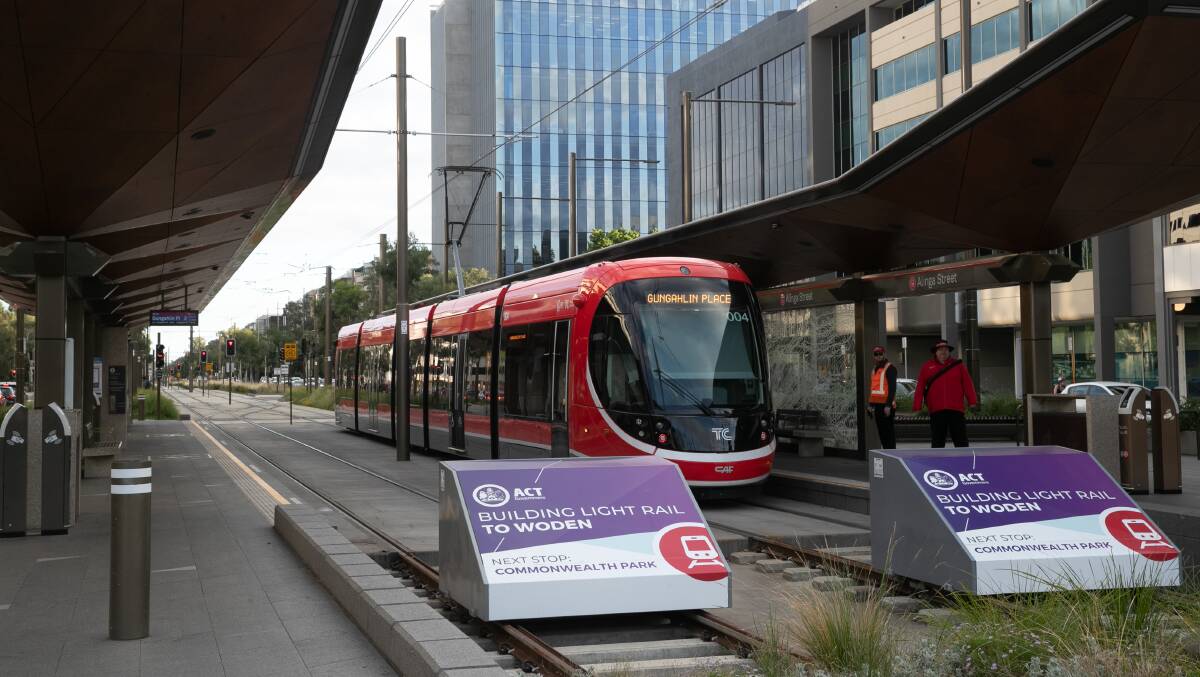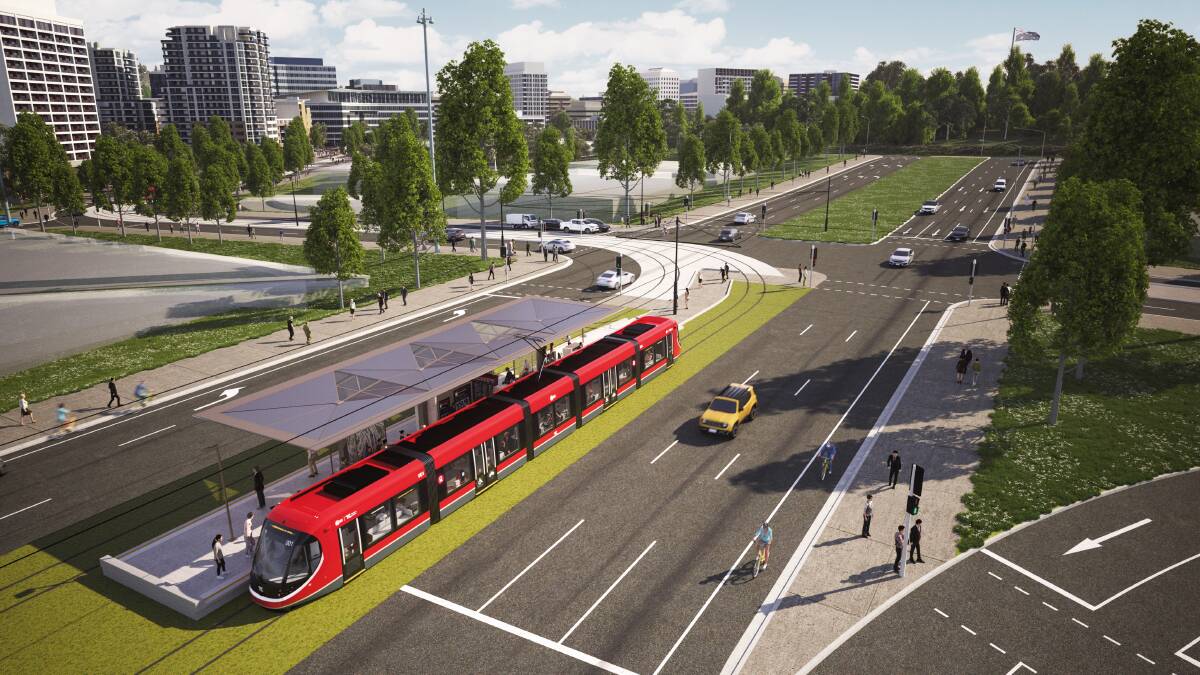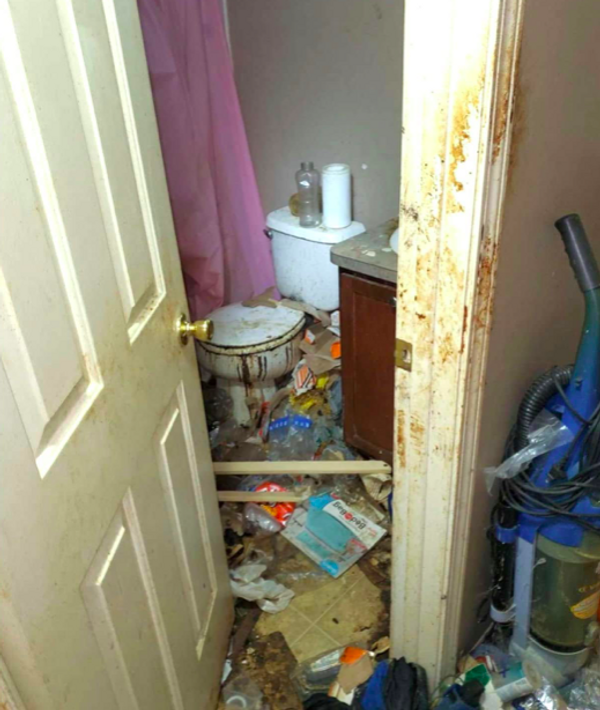The construction phase of Canberra's second light rail stage is set to create a commuter headache, with traffic capacity on Commonwealth Avenue to drop by almost 80 per cent.
The ACT government has established a disruption taskforce in an effort to reduce the impact of the years-long project on people trying to move into and through the city centre.
Transport Minister Chris Steel said the territory government would be asking commuters to rethink their routes and routines as part of work to reduce the pressure in peak times and keep the city moving.
"This could include using public transport or active travel if it's viable, changing how you drive to work, or adjusting your travel time to avoid congestion," Mr Steel said.

Mr Steel warned the impact on the roads will be mostly felt by people commuting to the city from the southside, but the ramifications would be felt across the city.
"The government is being upfront with Canberrans that the construction of light rail will be very disruptive for our road network, with lane closures and diversions in place for several years on major approach routes into the city from the southside," Mr Steel said.
Lane closures and lower speed limits could see traffic capacity on Commonwealth Avenue cut from 5200 vehicles an hour to 1100 vehicles an hour.
Traffic modelling showed Kings Avenue could see 20 per cent more traffic in the morning and afternoon peaks, as motorists sought to avoid Commonwealth Avenue and road closures.
Traffic on Parkes Way between Kings Avenue and the city could also rise between 45 and 60 per cent in peak periods, the ACT government said.

"The disruption associated with construction [of light rail] is going to be significant, but, once completed, light rail will make our city more vibrant, sustainable and better connected," Mr Steel said.
"I'd like to thank Canberrans for their patience and understanding in advance as we deliver this major project that will benefit Canberrans for generations to come."
The brief of the disruption taskforce includes managing network demand, identifying road and intersection improvements and bolstering public transport and active travel options.
The push comes after a public transport recovery plan in April suggested the ACT government would encourage major employers to allow more flexible working hours to ease peak-hour pressure.
Mr Steel said Canberrans should be confident they would have the information they need to best plan around the light-rail construction work.
The first step in the project will see utilities along the route relocated, before the first major construction project to raise London Circuit to the level of Commonwealth Avenue, for which engineers have already completed preliminary designs.
The project will require nearly 60,000 cubic metres of fill, and permanently close the cloverleaf interchanges which connect Parkes Avenue and Commonwealth Avenue with roads in the city.
Work to raise London Circuit is expected to begin in early- to mid-2022, with development and works approval applications for the project to be lodged later this year.
Construction of stage 2a of light rail - which would extend the rails beyond the current Alinga Street terminus to Commonwealth Park - is slated to begin after the London Circuit raising project is finished.
MORE A.C.T. POLITICS NEWS:
- Monumental decisions: which women should be recognised with statues?
- ACT Labor to target diversity in its ranks, candidates
- 'Hypocrisy' for Albanese to blame me for blocking territory rights: Zed
- Coalition 'ripped guts' from Medicare, made bulk-billing failure: Barr
Mr Steel has previously said he was confident the ACT would secure works approval from the National Capital Authority to allow the project to proceed to its intended destination in Woden.
"We've got two governments - the federal and the territory governments - now supporting this project with funding and we're looking forward to working closely with the NCA through the works approval process," Mr Steel said in April.
The project is expected to cost close to $2 billion, with the cost per kilometre of the 11-kilometre stretch almost $173 million.
The ACT government awarded a $90 million contract to multinational infrastructure consultants AECOM earlier this year.
Mr Steel said at the time AECOM would be working on designs for the complete second stage of the light rail project while its first section - from Alinga Street to Commonwealth Park - is being built.
"The public can expect to start seeing work occurring on the light rail stage two project, which is a very exciting, important project for our city, and one that we hope will deliver the same benefits that we've seen on stage one," he said.







